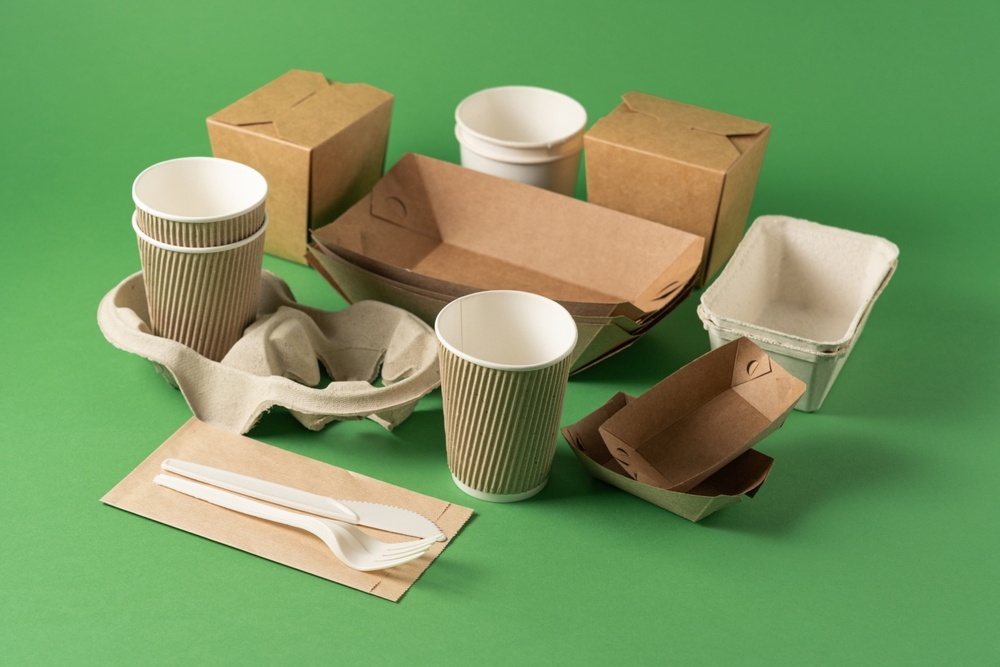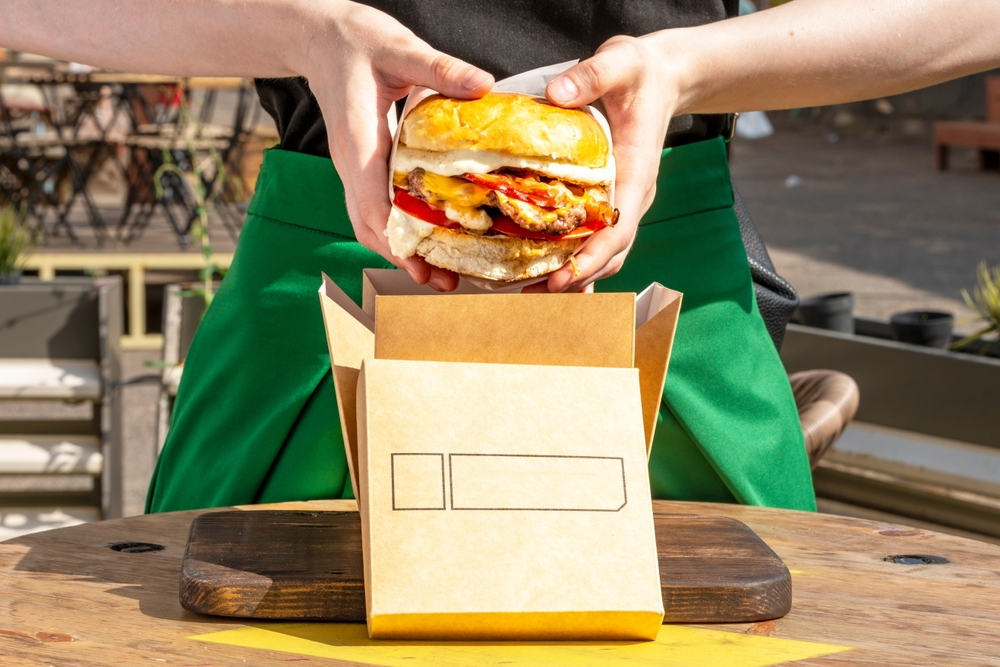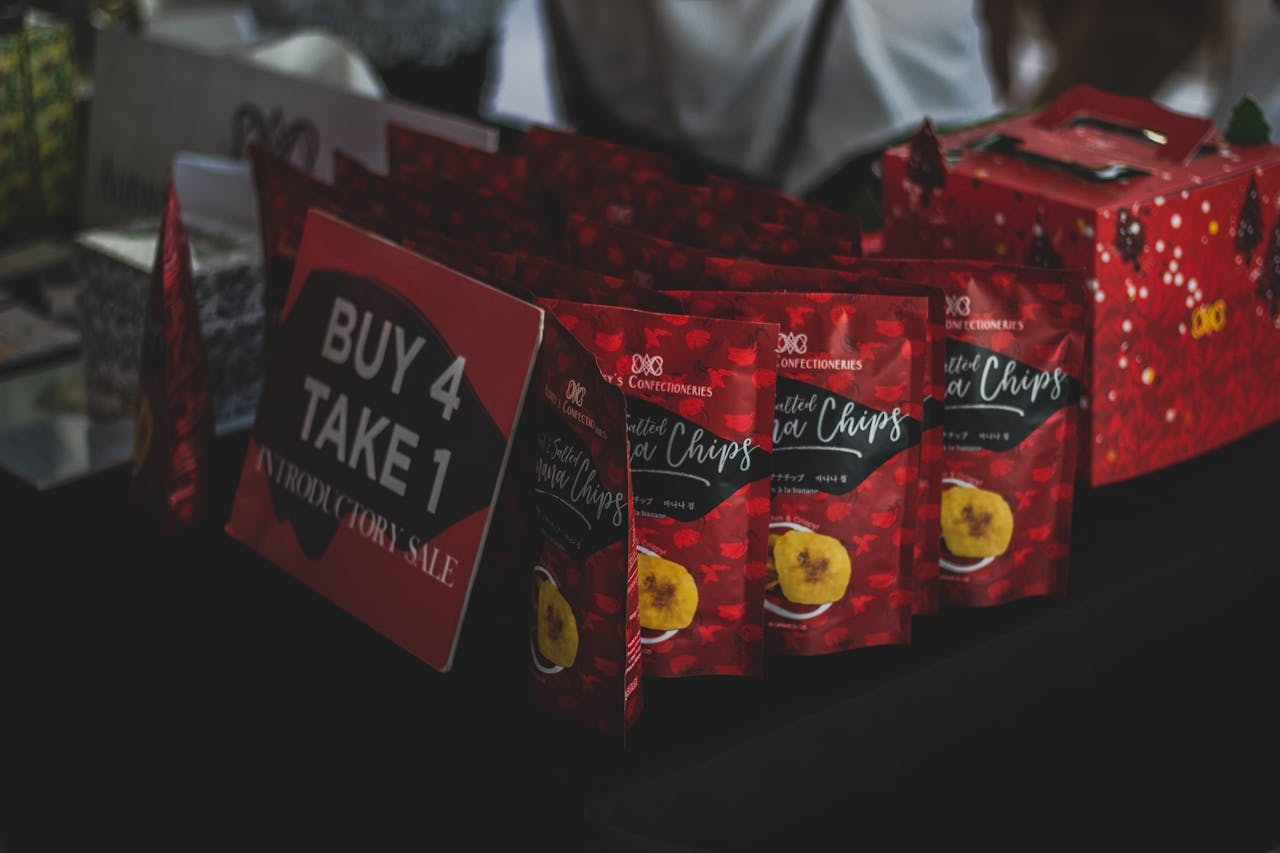Eco-Friendly Takeaway Packaging Trends 2024
By Anttoni Taimela · 29. May 2024
Are you curious about the emerging takeaway packaging trends for 2024?
As the industry pivots towards sustainability and innovation, knowing which eco-friendly materials, design trends, and smart technologies lead the pack is crucial.
This article guides you through the latest developments without the fluff – think compostable containers, interactive labels, and minimalist design – all while adhering to new regulations.
Dive in for a look into how these takeaway packaging trends 2024 will shape the future of takeaway packaging.
The Green Wave: Sustainable Takeaway Packaging Innovations 🌱
 Sustainable Takeaway Packaging
Sustainable Takeaway Packaging
The food packaging industry is catching the green wave, with sustainability at its helm.
From plant-based biodegradable materials to reusable containers, we’re witnessing a transformative era in packaging strategy.
It’s not just about reducing waste anymore; it’s about making a positive environmental impact.
Innovations in biodegradable materials, like Notpla’s seaweed-coated packaging, are pushing the boundaries of sustainability, offering recyclable and compostable alternatives to conventional plastics.
Moreover, the adoption of sustainable packaging is a powerful tool for businesses to communicate their environmental values, which resonates with today’s eco-conscious consumers. But let’s break it down and explore these innovations in detail.
Biodegradable Advances
The advent of plant-based plastics marks a significant leap in the food packaging industry.
These biodegradable packaging options are derived from materials such as corn, sugarcane, and cellulose, ensuring that quality isn’t compromised for sustainability.
For instance, PLA bioplastics, usually made from cornstarch, and bagasse products, typically derived from sugarcane residues, serve as a testament to this biodegradable advancement.
From Plastic to Paper
While biodegradable materials are gaining traction, there’s also a significant shift from plastic to paper in the packaging world.
This transition comes with a positive environmental impact, as paper packaging is both biodegradable and cost-effective.
However, it’s not all roses. The downside of using paper for takeaway packaging is the potential for leaks with greasy food.
But then again, isn’t the journey to sustainability all about finding the balance and overcoming challenges?
Compostable Containers
Another notable trend in the sustainable packaging arena is the rise of compostable containers. Designed to break down into non-toxic components, these containers significantly reduce packaging waste.
By decomposing quickly and releasing nutrients back into the soil, these containers play a vital role in contributing positively to the environment.
Smart Packaging: Enhancing Customer Experience and Food Safety 📱
 biodegradable recyclable burger box
biodegradable recyclable burger box
In today’s digital era, smart packaging is revolutionising the food industry.
These innovative systems interact directly with food and its environment, extending shelf life while maintaining or improving food quality.
Equipped with sensors and indicators, smart packaging provides essential information about the food’s preservation state, flagging temperature fluctuations and potential microbial growth.
Moreover, with the inclusion of QR codes, consumers can access interactive content and vital product information, enhancing their overall experience.
Interactive Labels
Interactive labels are the game-changers in the world of smart packaging. Storing critical data such as product origin, shelf life, and ingredients, these labels enhance transparency and strengthen consumer trust.
With QR codes, customers can scan and get immediate access to a product’s traceability, origin, and detailed information, facilitating a new level of engagement.
Shelf Life Extension
When it comes to food safety, extending the shelf life of products is a top priority.
Intelligent packaging steps into this role, providing real-time information about the freshness of food throughout its journey in the supply chain.
By sensing, detecting, and recording variations in food, packaging, and environmental conditions, intelligent packaging plays a crucial role in supporting the shelf life extension of food items.
The Minimalist Movement: Less is More in Design 🎨
Switching gears, let’s delve into the world of design. In the realm of packaging, less is indeed more.
The minimalist movement is gaining momentum, with brands opting for a more sophisticated and quality image that appeals to consumers valuing simplicity and elegance.
Minimalist packaging offers several benefits:
- Enhances product visibility
- Directs consumer attention to the visual appeal of the product itself
- Cost-effective, as it uses simpler printing processes and less material, cutting costs for brands with high-volume products.
Clear Labelling
One of the key aspects of minimalist packaging is clear labelling. It’s crucial in food packaging as it lets consumers make informed purchases and be aware of the product’s contents.
Consistent packaging design, including clear labelling, enhances brand recognition, instils trust in the audience, and ensures a cohesive brand experience.
Reducing Visual Clutter
A minimalist approach to packaging not only emphasises functionality but also reduces visual clutter.
By presenting a simple, uncluttered design, it facilitates customer focus on the product and sustainability message.
Adopting a minimalist approach brings out the product’s value and gives it a fresh look, enhancing its perceived quality.
Customization and Personal Touch in Packaging ✨
 branded food packaging
branded food packaging
As we appreciate the beauty of simplicity, let’s not forget the allure of customization.
Personalization in food packaging is a significant trend, helping brands create a robust impression and cater to consumer needs for distinctiveness.
From printed names on takeaway containers to personalised notes and messages, customization adds a unique touch that differentiates brands and offers a tailored experience to customers.
In the era of social distancing, these personalised elements in packaging build strong customer relationships by creating a sense of connection.
Brand Storytelling
Custom packaging serves as a tangible platform for companies to convey their brand story, underlying values, and the purpose behind their products to customers.
By incorporating the brand’s ethos into the packaging, companies can create a deeper connection with their audience.
Memorable Unboxing
The concept of personalization takes a whole new meaning when it comes to unboxing.
Transforming the process of receiving a product into an exciting and memorable unboxing event can significantly enhance the customer experience.
Personal touches such as custom notes or thank-you messages make customers feel valued and build a stronger connection with the brand, leading to increased customer satisfaction.
This enticing unboxing experience can prompt customers to share their experience on social media, expanding the brand’s reach.
Summary
As we wrap up this journey through the world of eco-friendly takeaway packaging trends, it’s clear that sustainability is the way forward.
From biodegradable advances and smart packaging to minimalist designs and personalised touches, the industry is ever-evolving.
As consumers, our choices can drive this green wave further.
As businesses, adapting to policy shifts and balancing convenience with eco-consciousness can make all the difference.
So, the next time you enjoy your takeaway, take a moment to appreciate the packaging. After all, it’s not just about the food inside, but also about the story the package tells. 🍱
Frequently Asked Questions
What are some notable trends in eco-friendly takeaway packaging?
Eco-friendly takeaway packaging is trending towards biodegradable materials, reusable containers, smart packaging with interactive labels, and minimalist designs, providing sustainable options for on-the-go meals.
How is technology influencing food packaging?
Technology is revolutionising food packaging with smart systems that extend shelf life and maintain food quality by interacting directly with the environment and providing essential preservation information. It’s like having a personal food bodyguard!
What is the role of clear labelling in food packaging?
Clear labelling is crucial in food packaging because it helps consumers make informed choices and know exactly what they’re consuming. It boosts transparency and builds trust with consumers.
Can customization enhance the customer experience?
Absolutely! Customization in food packaging can create a strong impression, catering to consumer needs for distinctiveness and building powerful customer connections. So, go ahead and personalise to enhance the customer experience!

